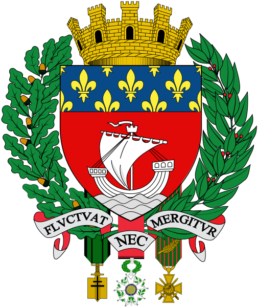Paris has added nearly 70 hectares of green infrastructure and rooftop gardens in order to reduce the urban heat island effect.
One of the most urgent and noticeable ways in which climate change affects the French capital is the city’s urban heat island effect. To alleviate rising temperatures, Paris is greening its grey infrastructure, planting trees, and creating rooftop gardens all over the city in order to adapt to climate change and create a more pleasant living environment for its citizens. The city has already added 62 hectares of green space and 4.7 hectares of green roofs.
20,000 new trees planted by 2020
Cities100 – 2015
The coming years will see this progress expanded. Going forward, vegetation must be planted on all new buildings, and, by 2020, the city will build 100 additional hectares of green roofs – one-third of which will be used to produce fruit and vegetables. To get citizens on board with the initiatives, the city issued a “license to green” to all Parisians encouraging them to plant more trees and gardens on vacant pieces of land – anything from a small strip of grass on a sidewalk to a full-fledged community garden.
The challenge
Paris’ dense infrastructure network, built largely of concrete and asphalt, causes a significant urban heat island effect in which city temperatures are significantly higher than those in nearby rural areas. This trend is exacerbated by climate change, and to help reverse its effects, the city has instituted a range of greening initiatives that will make the city’s infrastructure more permeable and absorbent and improve air quality.
Co-benefits
Environmental Increased vegetation absorbs more CO2 and improves air quality.
Health Fifteen thousand people died in France during a heat wave in 2003. To prevent such disasters from becoming more common, Paris is protecting its citizens – particularly the elderly and those in ill health – from excessive heat.
Social 80% of Parisians support the initiatives to create more green spaces in the city, which will lead to a more pleasant living environment.
About Paris
Paris is the capital and most populous city of France, with an administrative-limits area of 105 square kilometres (41 square miles) and a 2015 population of 2,229,621. The city is a major rail, highway, and air-transport hub served by two international airports. Paris is especially known for its museums and architectural landmarks: its Louvre is one of the most visited art museums in the world.


